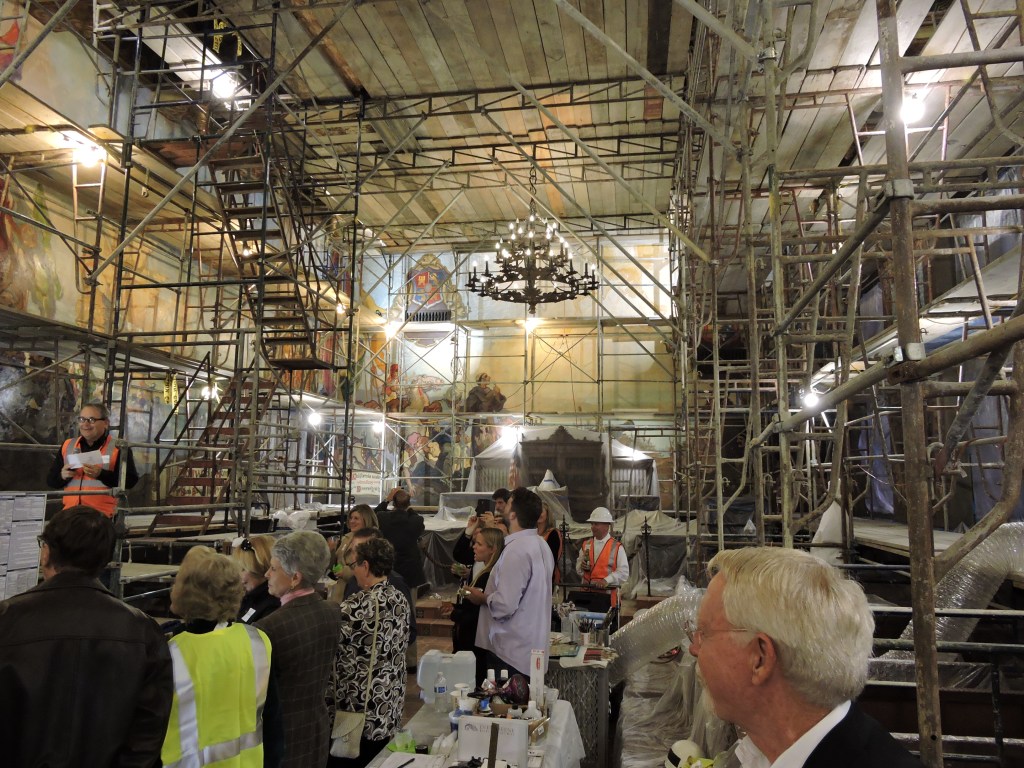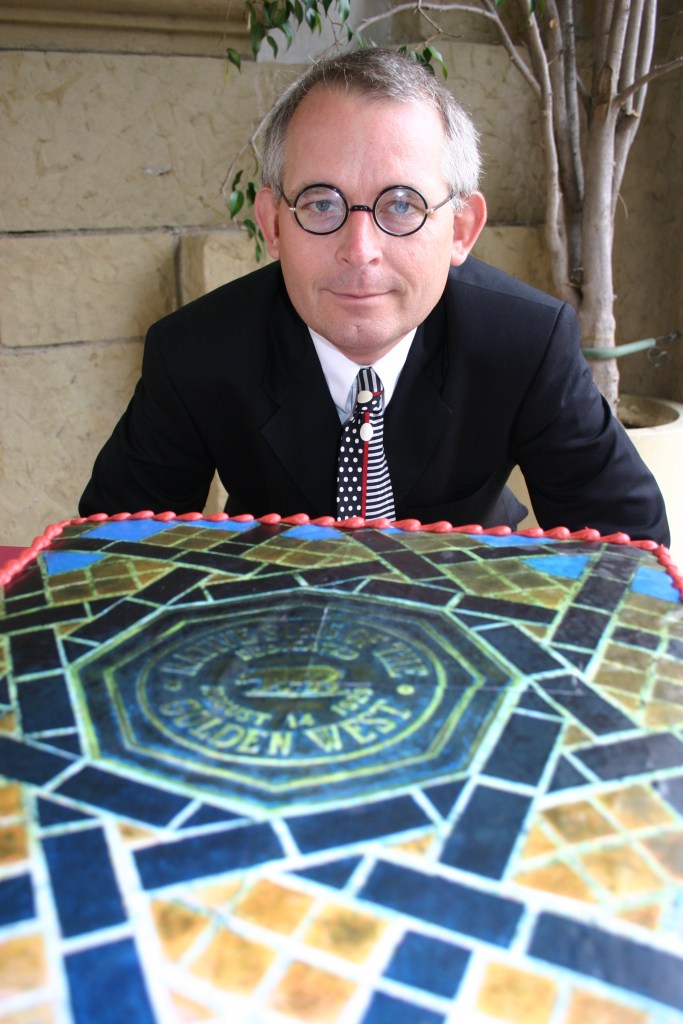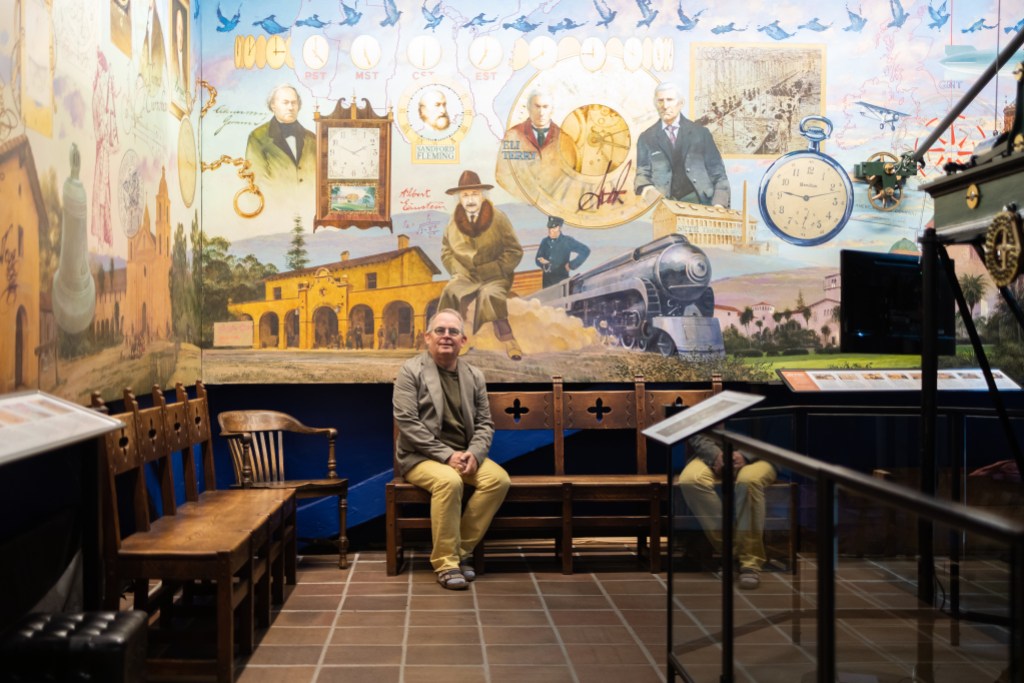Building on a Legacy
Robert Ooley, Recently Retired County Architect and Courthouse Advocate, Continues His Quest
By Josef Woodard | January 26, 2023

It’s fair to say that the relationship between Santa Barbara and architecture is, well, complicated. While the architectural landscape here is a rich and diverse one, from elaborate estates behind Montecito gates to Craftsman gems to city-certified variations on the dominant Spanish Colonial Revival theme, Santa Barbara also mandates uniformity and strict building guidelines.
One figure in a central position in the city’s architectural maze for the past 30 years has been Robert Ooley, who holds the elite status as a three-star Fellow of the AIA (American Institute of Architects) and recently retired from his post as County Architect. He landed the position in 2002 — which involves serving as the “building official” and permit authority for all county-sponsored projects — after working with local architects Howard Wittausch, Ken Davenport, Don Sharpe, and Barry Berkus. Along with his extensive work on public sector structures, developing important sustainability policies and other work, Ooley has taken a passionate interest in restoring and protecting the legendary 1929-vintage Santa Barbara Courthouse. He ensured the structure’s National Landmark status and helped establish the continuing Courthouse Legacy Foundation.
We checked in with Ooley at this key juncture of his ongoing architectural life/work. He commented, “I look forward to my continued involvement in my community and seeing the completion of my books.”
Congratulations on your recent retirement. Is it a bittersweet moment for you? Ooley: It is only bittersweet in that I will not be in the Courthouse every day. Stuff happens that changes the building daily, and with no one keeping an eye on this from a conservation POV, then history gets lost.
I have published my first book (Butterfly Wood: Frank Lloyd Wright’s Prairie House West, about the historic Wright house in Montecito, the residence of author TC Boyle and family for many years) and am working on five other books, about architecture, but also different topics: a travel guide, a monograph of Reginald Johnson, a monograph of George Washington Smith, a monograph of William Mooser Architects, and finally a book on the Courthouse. So, I’ll be busy for a while, if not traveling.
For clarity’s sake, what does the job of County of Santa Barbara Architect entail, and did that job description evolve during your time there? There are 58 counties in California and about half of them have a County Architect. In general, the County Architect is involved, if not responsible for the capital development of the county entity. The scope of the job will depend on how each county has structured the position.
The job has basically been the same over the years. The County Architect acts as the “building official” for county sponsored projects — that is, the County Architect is the permit authority. County projects do not go to the Planning or Building Department, normally. The only exception is when a project is located within the Coastal Zone, of which the County Planning Department is the permit authority. County projects are exempt from requirements of a city when the project is located within a city.
That role must be a particularly rewarding one in a city as architecturally rich — and also complex — as Santa Barbara. Do you sense that special quality, and challenges, in this locale versus a similar position in either a larger or smaller city, for instance? In general, county projects are not required to conform to design requirements of the city where the project is located. However, we do like to make the projects sensitive to buildings and the community around them.
Are there specific projects you were involved in that you are especially proud of, or which were memorable in some way? I enjoyed working on projects that have a direct benefit to the public, like medical clinics and fire stations. In the mid-1990s a pediatrician in Lompoc announced he was retiring. There were no other pediatricians in the Lompoc Valley to take on the patient load. When that happens, the county public health department, by law, becomes the default care provider, but we didn’t have a pediatric clinic in Lompoc. So, with great speed, we must design and build that clinic. Not only did we get that done, we made the building the first county building in our inventory be net-zero (energy) before anyone was talking about net-zero requirements.
Another project is conservation of the Santa Barbara Courthouse. Again, in the early 1990s, I wanted to get something done on the Spirit of the Ocean fountain, which was falling apart and failing daily. So, I contacted the Getty Foundation for help — to which they said they would love to help, but they only fund National Historic Landmarks. I scratched my head in wonderment that it was not an NHL. So, I set to work on the nomination.
In recognition of the effort to achieve both state and national historic designations, the Board of Supervisors gave me the original designation certificate, which I have hanging here in my office at home. The many conservation projects at the courthouse have all been orchestrated by me and I have enjoyed each one of them.

The late architect Barry Berkus said that the Courthouse is the greatest public building in the country. Are you of a similar opinion, and what are the characteristics which make it such a special place? Most people — and not being aware of the details of why — would agree that the Santa Barbara Courthouse is a special piece of architecture and a special property. The design of the courthouse is a purely American expression of its architect, William Mooser of the William Mooser Company. Up until 1967, it was the oldest operating architectural firm in California and among only five architectural dynasties in the United States. An architectural dynasty is one where there are three or more generations that keep the business operational.

The general design of the courthouse has its roots in the Andalusian area of Spain, but the composition of the building is purely Mooser’s interpretation of his experiences in that region of Spain over a decade of study while living there.
When I was drafting the National Historic Landmark nomination, I researched every county courthouse of “Spanish Colonial Revival” design, of which there are a few. Mostly in the Southwest and a few in Florida. All those buildings are only skin deep. That is to say that the building exterior is only a wrapper for a more modern building under the skin. The Santa Barbara Courthouse is a Spanish Andalusian building through and through. From the siting of the building to the layout of the four buildings that make up the complex, to the interior spaces, and finally to the detailing of the architecture.
It simply is the only one of its kind in the country.
It has become the de facto center of town, where community celebrations happen, weddings occur, yes, and divorces, too. We were enjoying the Red Piano a few days ago talking with some folks from out of town on a short visit. We said, “oh, you must see the Courthouse!” They looked at us like we had lost our mind. Courthouse? They questioned “who wants to visit a courthouse?” I am sure they understood once they saw the place.
Barry was a cool architect. I worked for him for about three years. I just loved his energy.
You wrote an article in the Independent in 2018 headlined “Why an Architect?,” stressing the importance of hiring an architect with the AIA ranking—the “Good Housekeeping” seal of approval in the trade, and which you are inducted into. Is that a message you like to emphasize for those looking to build and remodel, especially in a renovation-charged region such as Santa Barbara has become? Of course, because I am a three-diamond Fellow of the American Institute of Architects, I must recite the “company” line: Hire an architect and hiring an AIA member is a better choice. The law allows a non-licensed person of whatever background to design their own house, remodel, addition, or a similar scoped project. In fact, the same person can design a four-story, four-unit building if they like. While that is allowed, it’s not prudent.
You know, if I sliced my hand open while cutting carrots in the kitchen, I could go to the sewing box, get a needle and thread and stitch up the wound. It doesn’t take a doctor to do that, right. So, while I may be able to do that, it is not prudent. Why? Because I don’t have the specific training to know what else might be going on that will cause significant issues down the road.
Architects are trained and practice their profession to know all the issues related to buildings — how they stand up, how they are powered, and what makes them stable. An AIA architect is required to maintain professional course credits to remain in good standing, and they take an oath of ethics and professional conduct. Therefore, I refer to it as the “good housekeeping seal.”
The consumer can feel better about hiring an AIA member, versus just a licensed architect. And for sure, they should not use an unlicensed person.
If it’s not too grand a question, how have you seen the architectural life of Santa Barbara change over the decades you have been here? Well, that is an interesting question. In the historic district, not much, which is the way most of us like it. I was just walking down a paseo in Victoria Court, where we had a county office located for a while 25 years ago. I noticed that the paseo had not changed much, if at all over that time. The density has increased, there have been numerous new buildings taking the place of older buildings. I like the diversity of architectural expression outside the historic districts.While Santa Barbara likes to think of itself as the most unique city in California, or even the Country, we are not. Yes, we are a special place, but there are other special places too. Getting a project permitted in Santa Barbara is not much different than San Francisco, Los Angeles, San Diego, or Monterey. Getting your project permitted in California is the challenge. The minestrone soup of regulations that a project must respond to is maddening. It is any wonder how anything gets done.
Can you tell me about the Courthouse Legacy Foundation (courthouselegacyfoundation.org), and what role you’ve had in moving that forward? The short answer is that I am the founder. Well, technically, there are three founders: Naomi Schwartz (former County First District Supervisor), and Frank Ocha (retired Superior Court Judge).

Around the same time, I was working on the designation nominations and trying to figure out how to get grants to help with conservation work, I met with Supervisor Schwartz, who at that time was First District County Supervisor — the Courthouse was in the First District at that time.
We talked about various nonprofits that could help, none of them with a focus on the courthouse. The Pearl Chase Society was the closest organization with historic preservation in its mission. So, we decided to create an organization. We gathered a group of folks involved in the nonprofit sector to ask them about pros and cons. We choose “Courthouse Legacy Foundation” because of the legacy of what we are preserving.
The Courthouse Legacy Foundation has accomplished some great projects, like the Spirit of the Ocean Fountain, the Mural Room, the Main Arch Ceiling, and is now working on the Main Arch. We are halfway and need the remaining $500,000 to complete that work.
Architects and others sometimes complain about the bureaucratic obstacles faced by new projects, given the strict guidelines of the Architectural Board of Review. Do you tend to see both sides of the argument, as a working architect and also a preserver of architectural integrity and uniformity? I have been fortunate in my career to have been exempt from many of those requirements, as government projects are generally exempt. Serving on the Historic Landmarks Commission — I never served on ABR — is both a joy and frustrating. Frustrating because I see how long it takes for projects to get through HLC, and there is not much we can do about it. It is a very rare case when a project has everything together that it sails through. Most of the time something is missing, so the project must return. Then something else is missing.
It can also be a game played, to see if the project can get through without this or that thing on the drawings. What does make the review of projects in the historic district somewhat easier, we have guidelines. While there is no guarantee, if you follow the guidelines, your project should fare better than others.
Among your writings, you wrote about the Frank Lloyd Wright house in town. Other historically important architects have left their mark here — though sometimes secreted away from public view behind gates and hedges. Are there particular historic structures in the County you are especially impressed by? Individual buildings, while holding charm and delight on their own, are interesting, but I am more interested in the body of work of the architect. Is there continuity in their work or is it random what you get in every building they do? How do you spot these architects? Frank Lloyd Wright had made duds when he first started, until he landed on the Prairie house. He was not the only one playing around with the Prairie house. Cecil Corwin was too, but we never hear about Corwin, do we? It’s Frank Lloyd Wright.
I admire the work of the Greene brothers. I like the clean lines of a Richard Meier building; I like the inventiveness of a Barton Myers building.
I have been working on a series of what I call Case Study houses. A take-off of the Case Study program of the 1950s by the Arts & Architecture Magazine. So far, I have drawn 30 variations all based on the same basic program — a two-bedroom, two-and-half-bath house with an ADU. Living room, dining, kitchen, office/study, and media room. In all kinds of styles, Prairie, Mid-Century, Modern, Craftsman, and some whimsical ones.
Sounds interesting. Looking back over your time on the job, and as an architect deeply engaged in Santa Barbara life, how do you reflect back on your experience, work-wise and otherwise? I came to Santa Barbara in 1976 when I was in high school. My father, before he retired, was a master finish carpenter. He could craft anything out of wood. He was responsible for some interesting projects from boats to corporate interiors. I wanted to get a Taliesin Chair but could not afford the more than $13,000 the furniture manufacturer was charging. So, I sent some photos to my dad and he made me one. I still have that chair, one of my favorites.
Reflecting on my time in the profession, well, it’s not over yet, I am still involved. But, looking back, I have enjoyed every moment.





You must be logged in to post a comment.